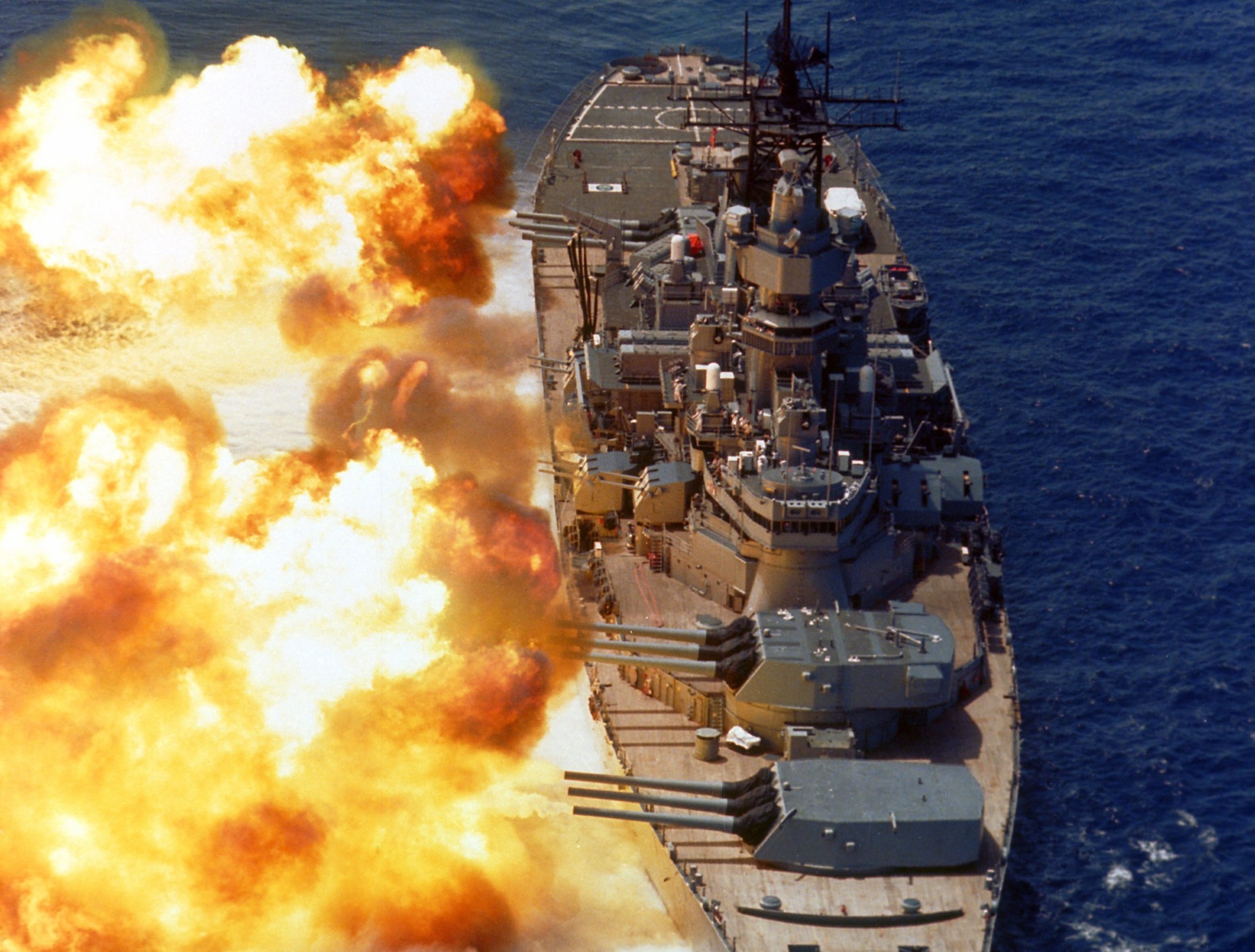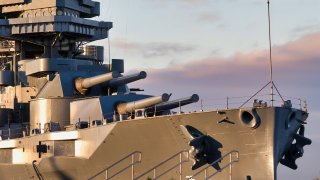Could the U.S. Navy Bring Back the Battleships? One Word Answer: No
Are battleships making a comeback? The battleship, the cornerstone of twentieth-century navies, has mostly faded into obscurity. Yet, a persistent group of battleship advocates have pushed to keep the battleship relevant, hoping that the venerable ships would return to contemporary navies.
Are battleships making a comeback? The battleship, the cornerstone of twentieth-century navies, has mostly faded into obscurity. Yet, a persistent group of battleship advocates have pushed to keep the battleship relevant, hoping that the venerable ships would return to contemporary navies.
But don’t count on battleships making a comeback. Battleships became obsolete for a reason.
“Battleshiips fell out of favor for a good reason,” The National Interest's Harry Kazianis wrote. “They are slow and too vulnerable to air and missile attack.”
Don’t count on battleships making a comeback
“There is occasionally still talk about seeing [battleships] back in active service,” Peter Suciu wrote. “However, such dreams aren’t likely to come true – and not just because smaller and more mobile guided-missile destroyers can do the job of shore bombardment better.”
Rather, part of the reason battleships will remain obsolete is because battleships require large crews to operate – which would be difficult to assemble and train from scratch.
And because naval defense technology has vastly improved. Large battleships would be vulnerable targets against the hypersonic missiles that Russia and China have been stockpiling. Large battleships would also be vulnerable to stealth fighters, which, like hypersonic missiles, did not exist when battleships were relevant.
Realistically, bringing back the battleship would require the US Navy to initiate a massive makeover – which is unlikely given that the Navy does not have the facilities necessary.
No good battleship options available
The US is still in possession of eight defunct battleships – all of which have been converted into museum pieces open to the public. Actually, the preservation of the battleships as museum pieces likely contributes to the ongoing interest in the vessel type, lending to a continue romantic impression, perhaps fueling calls for a revival.
Regardless, the museum pieces are just that: museum pieces, not ready for active service. “The elements have taken a drastic toll on those once majestic vessels,” Suciu wrote. “The USS Texas is currently undergoing repairs as her hull is leaking, while significant restorations were required to save the South Dakota-class USS Massachusetts.” Meanwhile, “a special cofferdam was even required to preserve USS North Carolina, another South Dakota-class battleship built just prior to United State’s entry into World War II.”
The four remaining Iowa-class battleships are understood to be the best candidates for revival – but the are old and withered and without spare parts available; resurrecting the Iowa’s would be an expensive, and potentially fruitless, exercise.
Conflict with China?
As Harry Kazianis notes, some naval enthusiasts are rationalizing that the battleship may be necessary for coastal conflict with China.
“Imagine this fictional showdown: It’s July 2026, and the United States and China are on the brink of war in the South China Sea…so what is America to do in such a fictional nightmare? Washington sends two Aircraft Carrier Battle Groups to the South China Sea…but what has China really concerned is not the mighty flattops Washington has at its disposal, but two rebuilt and essentially brand new Iowa-class battleships, armed to the teeth with the latest land-attack tomahawk missiles and long-range anti-ship weapons.”
But how would the battleship fare in such a showdown?
Robert Farley explains in his essay: “Is It Time To Bring Back the Battleships?”:
“There remains considerable debate as to how traditional battleship belt (side) armor could resist cruise missiles. Cruise missiles generally have less penetrating power than the largest naval artillery, although they have other advantages. Deck armor proved a more serious problem, and the demands of ensuring survivability from bombs, pop-up cruise missiles, and (more recently) ballistic missiles quickly outpaced the improved lethality of a large, heavily armored ship. And perhaps most importantly, no one figured out how to eliminate (as opposed to ameliorate) the problem of underwater attack; torpedoes continued to pose a lethal threat to even the most heavily armored of warships,” Farley wrote.
So, the battleship may have trouble surviving an exchange with China and their stockpile of hypersonic missiles.
Still, the battleship, built to dole out punishment, could be able to contribute offensively in a modern conflict.

“Big ships still have some lethality advantages,” Farley wrote. “For example, bigger ships can carry larger magazines of missiles, which they can use for both offensive and defensive purposes. Advances in gun technology (such as the 155mm Advanced Gun System to be mounted on the Zumwalt class destroyer) mean that larger naval artillery can strike further and more accurately than ever before.”
About the Author
Harrison Kass is a defense and national security writer with over 1,000 total pieces on issues involving global affairs. An attorney, pilot, guitarist, and minor pro hockey player, Harrison joined the US Air Force as a Pilot Trainee but was medically discharged. Harrison holds a BA from Lake Forest College, a JD from the University of Oregon, and an MA from New York University. Harrison listens to Dokken.
Main image is from Shutterstock. Intext image is from Creative Commons.


